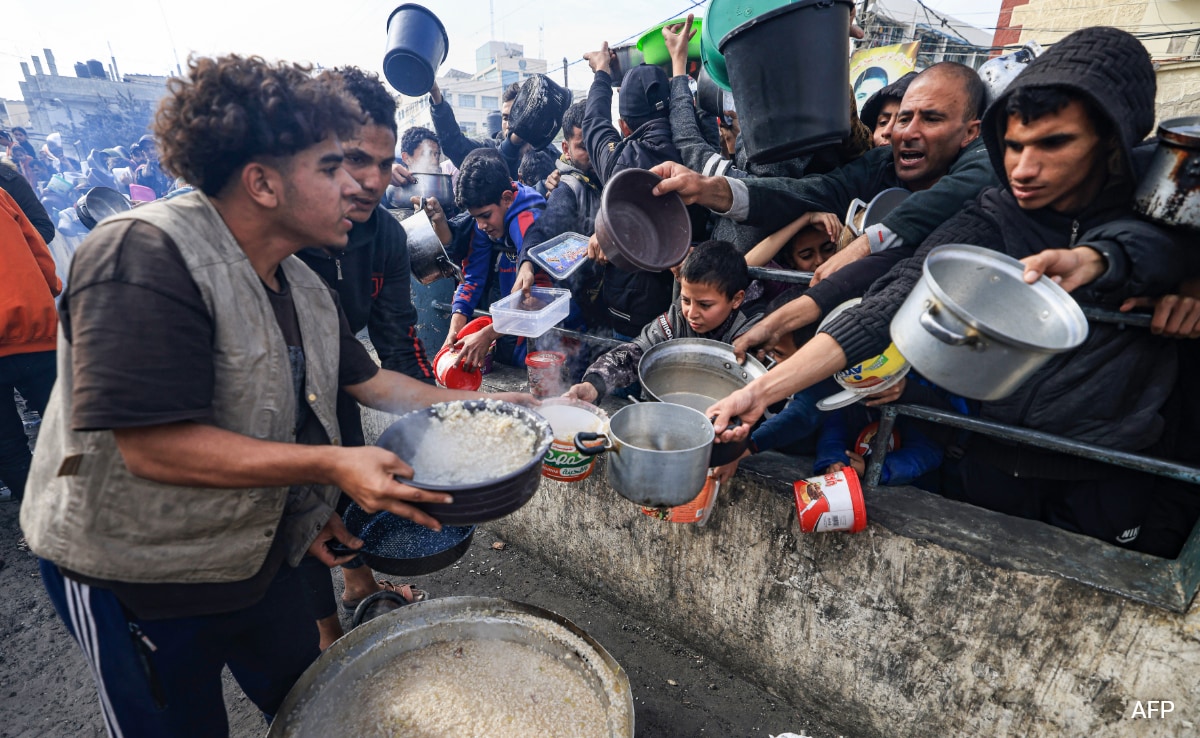
WHO also cited acute hunger and desperation throughout the war-torn Gaza.
Geneva:
The population of Gaza is in “grave peril”, the head of the World Health Organization warned Wednesday, citing acute hunger and desperation throughout the war-torn Palestinian territory.
The WHO said it delivered supplies to two hospitals on Tuesday, with only 15 out of 36 hospitals in the Gaza Strip functioning with any capacity at all.
WHO chief Tedros Adhanom Ghebreyesus called on the international community to take “urgent steps to alleviate the grave peril facing the population of Gaza and jeopardising the ability of humanitarian workers to help people with terrible injuries, acute hunger, and at severe risk of disease”.
In a statement, the WHO said its staff reported that “hungry people again stopped our convoys today in the hope of finding food”.
“WHO’s ability to supply medicines, medical supplies, and fuel to hospitals is being increasingly constrained by the hunger and desperation of people en route to, and within, hospitals we reach.”
The bloodiest-ever Gaza war erupted when Hamas attacked southern Israel on October 7 and killed about 1,140 people, mostly civilians, according to an AFP tally based on Israeli figures.
They took 250 hostages, of whom 129 remain inside Gaza, according to Israeli officials, in the worst attack in the country’s history.
Israel launched extensive aerial bombardment and a siege followed by a ground invasion. The campaign has killed at least 21,110 people, mostly women and children, according to Hamas-run Gaza’s health ministry.
“The safety of our staff and continuity of operations depends on more food arriving in all of Gaza, immediately,” Tedros said.
Last week’s United Nations Security Council resolution called for the “safe and unhindered delivery of humanitarian assistance at scale” — but did not call for an immediate end to fighting.
Tedros said the resolution “appeared to provide hope of an improvement in humanitarian aid distribution within Gaza.
“However, based on WHO eyewitness accounts on the ground, the resolution is tragically yet to have an impact.
“What we urgently need, right now, is a ceasefire to spare civilians from further violence and begin the long road towards reconstruction and peace.”
– ‘Stepping over patients’ –
WHO teams visited two hospitals on Tuesday — Al-Shifa in the north and Al-Amal Palestine Red Crescent Society in the south — to deliver supplies and assess the needs on the ground.
It said a reported 50,000 people were seeking refuge at Al-Shifa, with 14,000 sheltering at Al-Amal.
“At Al-Amal, colleagues saw the aftermath of recent strikes that disabled the hospital’s radio tower and impacted the central ambulance dispatch system for the entire Khan Yunis area affecting more than 1.5 million people,” the WHO said.
Only five of its nine ambulances are still operational, while WHO staff said it was “impossible” to walk through the hospital “without stepping over patients and those seeking refuge”.
While transiting across Gaza, WHO staff saw “tens of thousands of people” on the move, on foot, on donkeys or in cars.
“WHO is extremely concerned this fresh displacement of people will further strain health facilities in the south, which are already struggling,” said Rik Peeperkorn, the UN health agency’s representative in the Palestinian territories.
“This forced mass movement of people will also lead to more overcrowding, increased risk of infectious diseases, and make it even harder to deliver humanitarian aid.”
According to the latest WHO assessments, Gaza has 13 partially functioning hospitals, two minimally functioning ones, and 21 that are not functioning at all.
(Except for the headline, this story has not been edited by NDTV staff and is published from a syndicated feed.)




